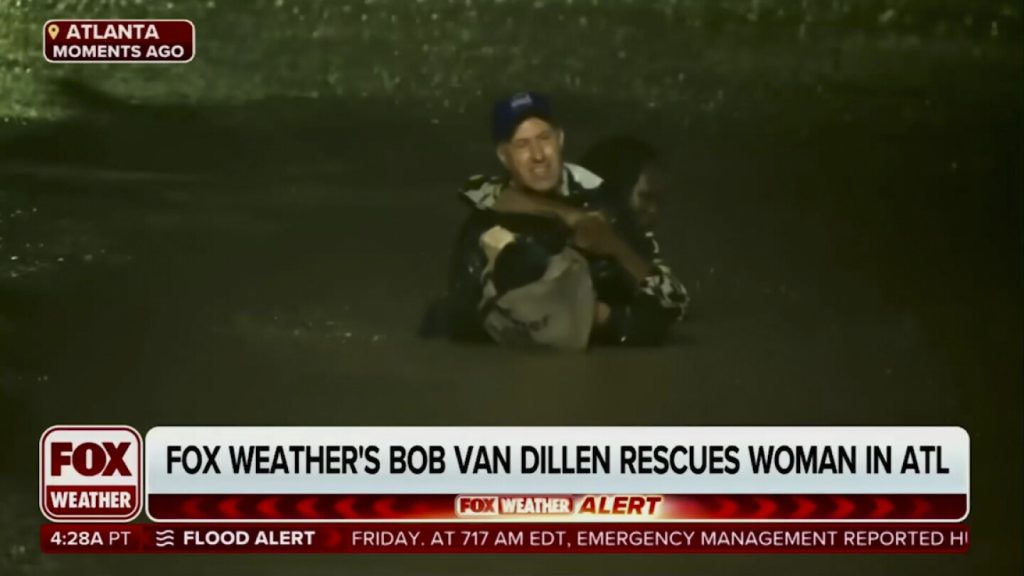Van Dillen’s quick thinking and selfless actions during Hurricane Helene showcase the intersection of a reporter’s professional obligations and human responsibility. Despite being in the middle of a live weather report, he noticed a woman stranded in her vehicle due to rising floodwaters. Without hesitation, he waded into the water, carrying her to safety as the situation grew increasingly dangerous. This act of heroism highlights the ethical considerations journalists sometimes face when their reporting duties collide with the need to assist someone in a life-threatening situation.
Subramaniam Vincent, director of journalism and media ethics at Santa Clara University, emphasized that Van Dillen’s actions were a testament to his moral compass. While he had a responsibility to report on Hurricane Helene, he also recognized the urgency of the woman’s situation and chose to prioritize her safety above all else. Vincent noted that in cases where someone’s life is at risk, the instinct to help one another transcends professional obligations. Van Dillen’s decision to intervene and rescue the woman exemplifies the essence of being a compassionate and responsible citizen.
The video of Van Dillen’s rescue quickly went viral, garnering praise and admiration from viewers around the world. Many lauded his bravery and selflessness, highlighting the importance of lending a helping hand in times of crisis. In a society often dominated by negative news, Van Dillen’s act of kindness served as a beacon of hope and solidarity, reminding us of the positive impact individuals can have on one another. His actions resonated deeply with audiences, sparking discussions about empathy, altruism, and the power of human connection in the face of adversity.
Van Dillen’s humility in recounting the rescue further endeared him to the public, emphasizing his genuine concern for the well-being of others. In his interview, he described the harrowing moment when he found the woman trapped in her submerged car, emphasizing the urgency of the situation. Despite the risks involved, he remained focused on ensuring her safety and acted swiftly to bring her to higher ground. His candid retelling of the events underscored his sincerity and commitment to aiding those in need, inspiring others to follow his example of compassion and courage.
The widespread recognition of Van Dillen’s heroic deed serves as a testament to the profound impact of selfless acts of kindness. As news of his rescue spread, social media platforms lit up with messages of gratitude and respect for his quick thinking and bravery. People from all walks of life came together to celebrate his actions, emphasizing the inherent goodness and decency present in society. Van Dillen’s actions resonated with countless individuals, reigniting a sense of unity and community spirit, showing that even in the face of disaster, humanity’s capacity for compassion and solidarity shines through.
In conclusion, Bob Van Dillen’s courageous rescue during Hurricane Helene exemplifies the best of humanity in the face of adversity. His willingness to prioritize another person’s safety over his professional obligations underscores the importance of empathy, altruism, and ethical decision-making. As a beacon of hope and compassion, Van Dillen’s actions serve as a powerful reminder of the transformative impact individuals can have on one another. In times of crisis, moments of kindness and selflessness can uplift communities and inspire others to follow suit, fostering a culture of mutual support and solidarity.


